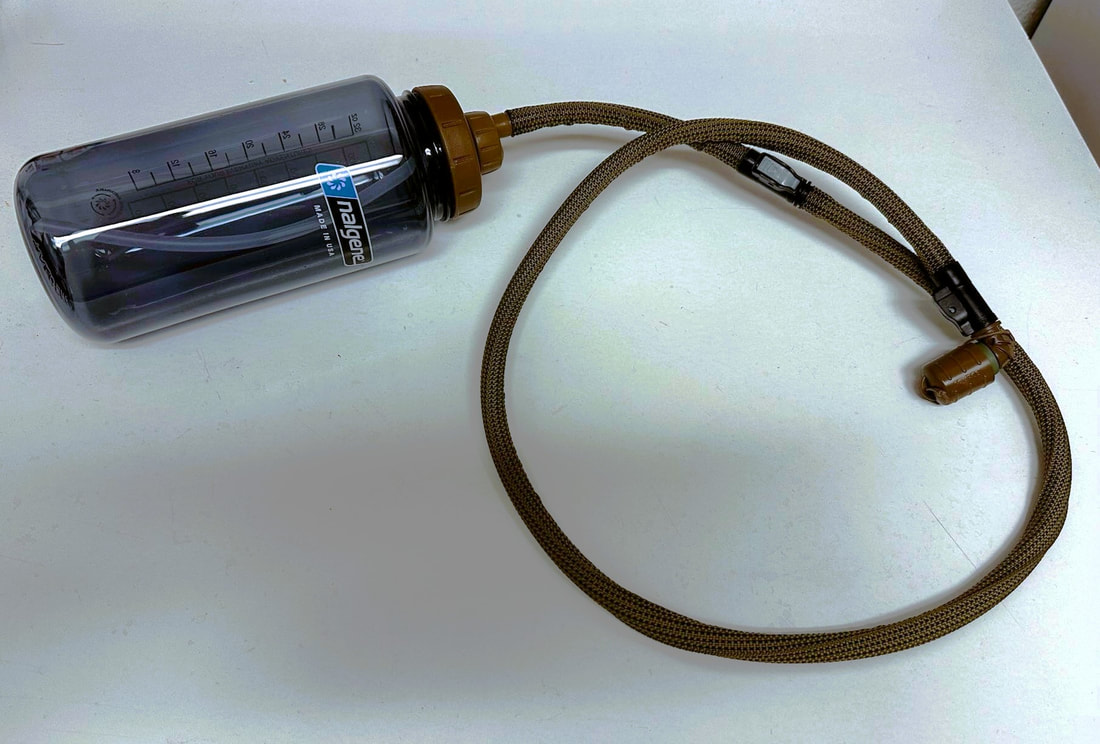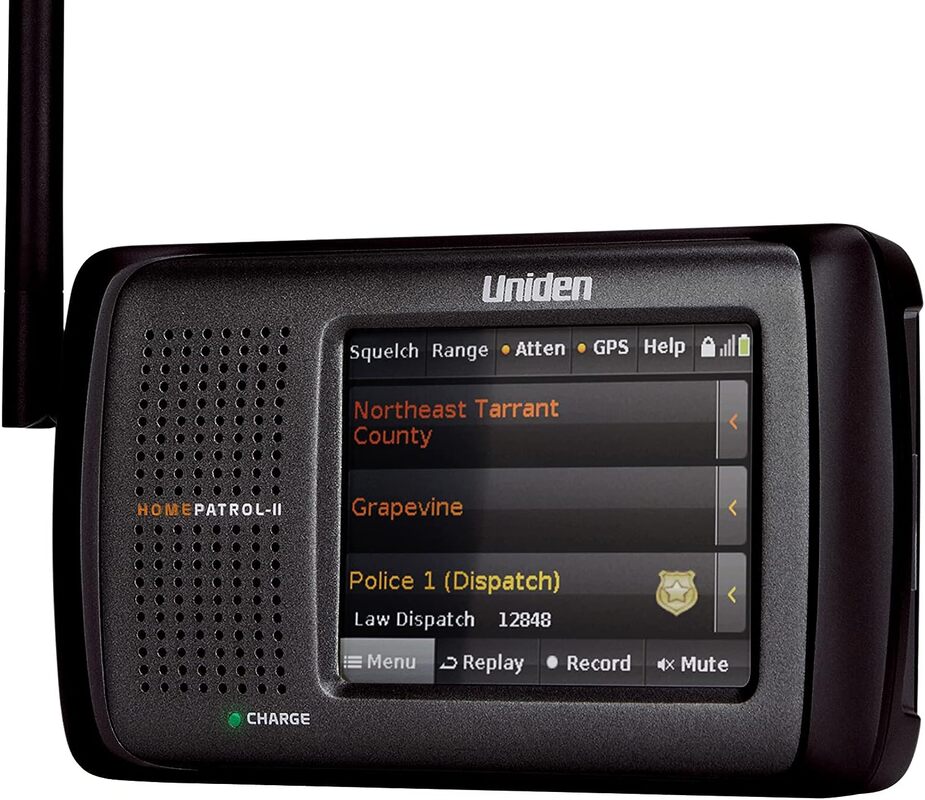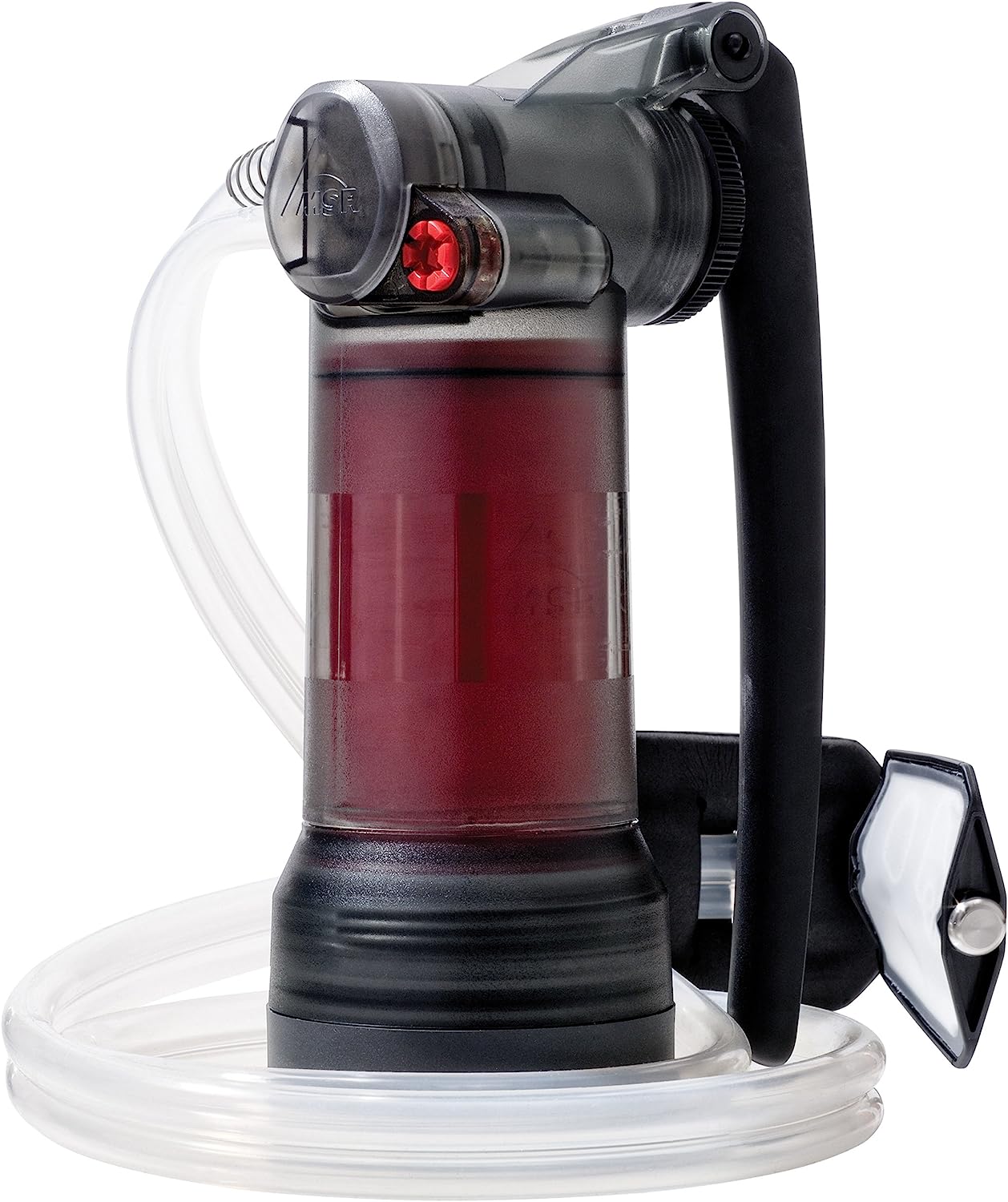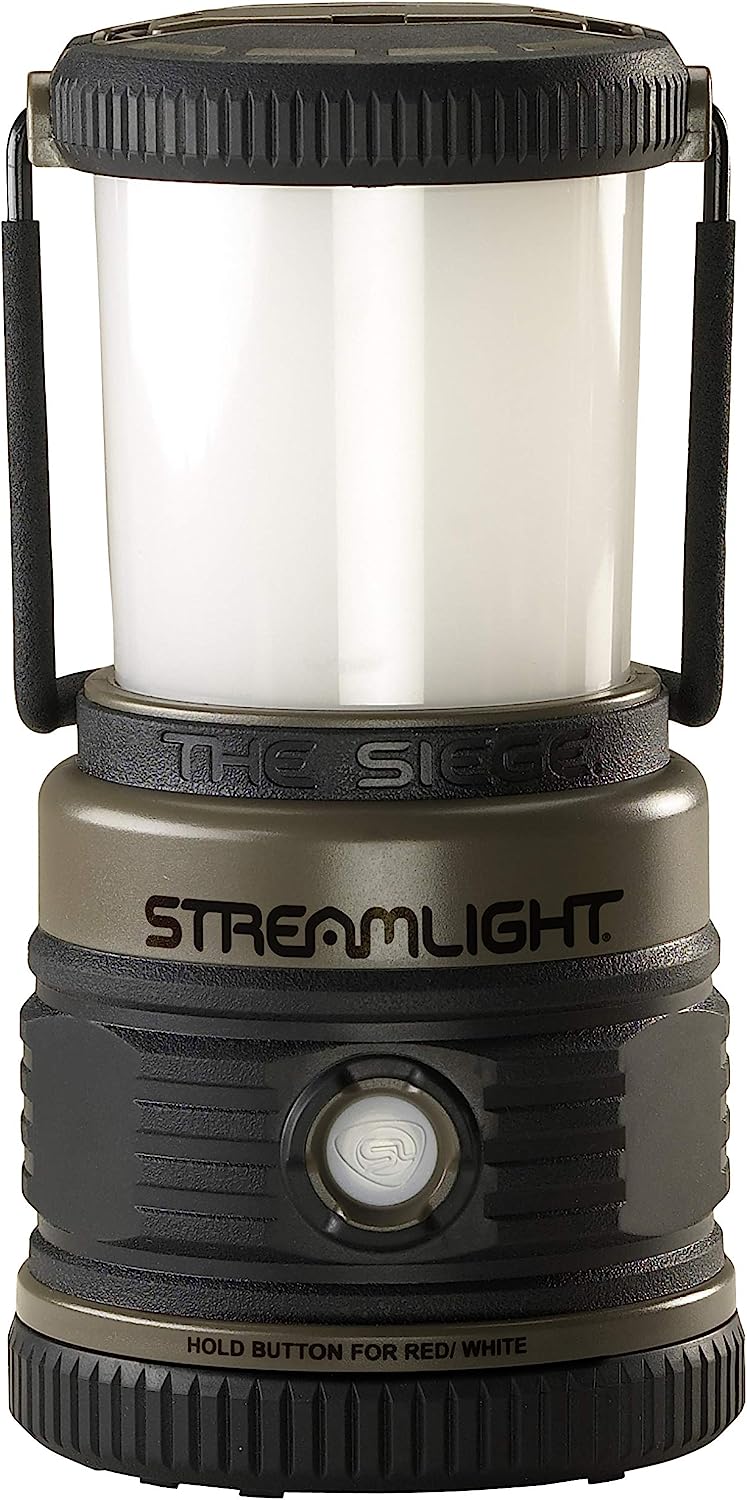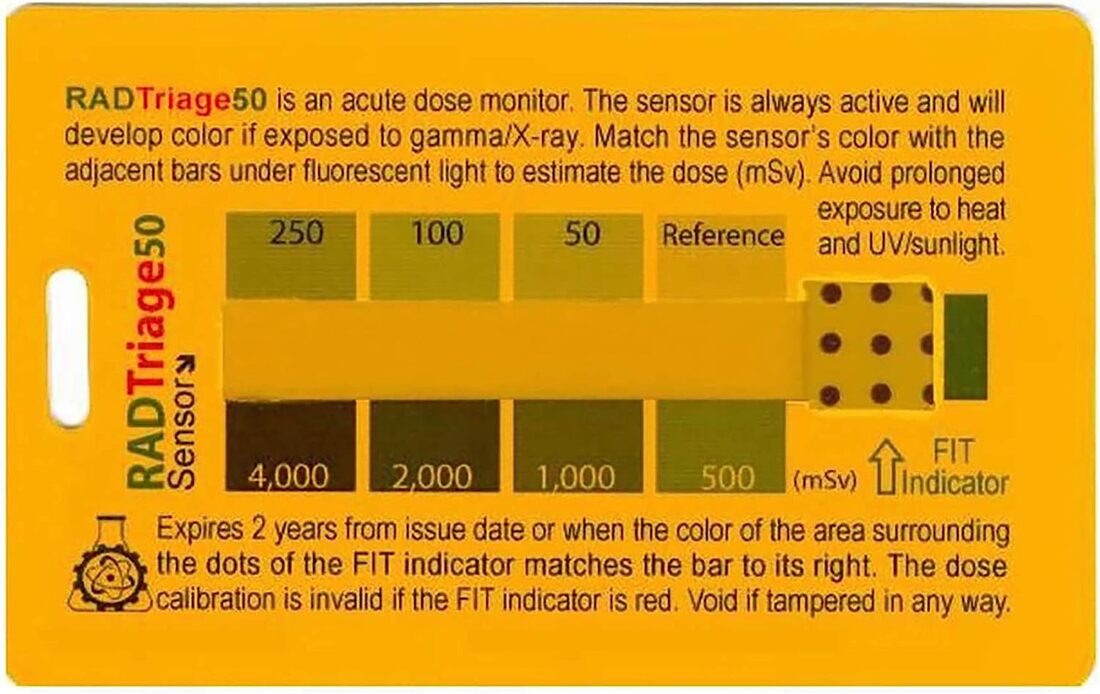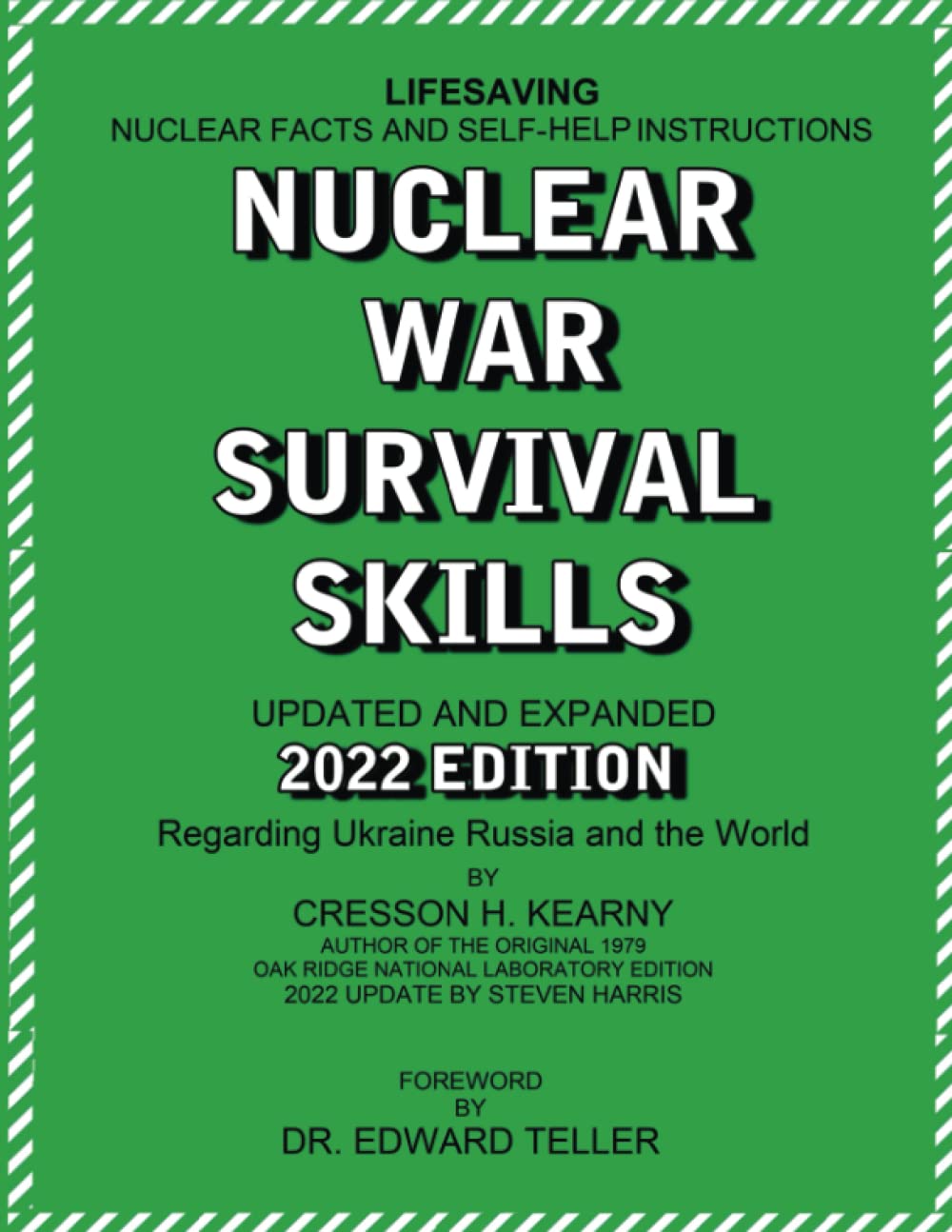|
We actually didn't shoot, despite putting targets down range. Why? No cans, for one. Two, the idiots were actually so close we thought it would be rude to start shooting in the darkness. The morons would have probably been utterly terrified that we were shooting and they would have no idea we had everything under control while wearing NODs.
Second, we also had a thought that they might be homeless or at least boondockers, and while fucktards who camp at any time, night or day, on a BLM shooting area, don't deserve any courtesy, disturbing homeless car campers who aren't shitting up the city itself would be too inconsiderate of us. Third, they were outside the ricochet zone but they wouldn’t know that. Also, unlike during daylight shooting, there would be no way to see them and one of the dumbasses might be out in the moonlight without a cheap flashlight to mark their position. Might be bad. Finally, we were up-moon from them, meaning we were backlighted. If they felt threatened and were armed, they had a clear silhouette of us. Discretion being the better part of honor, we packed in the targets after we played around with the different settings without firing a shot. I established a rough converging zero on that Somogear fake PEQ-15 I picked up. I have some questions about the illuminator (IR laser flashlight) but need to try it on a moonless night. One thing we noticed that under the monocolor of NODs, a white painted steel target doesn't really stand out. The lasers will reflect off it though. So we went driving in the darkness on desert roads. Driving IS possible with a monocular like the PVS-14, but there are a couple of caveats. 1. We had a full moon. Great contrast and the shadows weren't really deep. 2. We left before astronomical twilight was over, meaning there was a lot of sky light available. If you have both eyes open and enough ambient light, your brain will fill in the image well enough to give you some depth perception. I had issues keeping it "between the lines" so to speak but otherwise did fine. Got up to 80 on some sketchy roads. Pretty sure hearing a truck blasting by a high speed in total darkness freaked out the 'tard campers. Also when driving at night you gotta cover up the instrument cluster and turn off the dash iPad, I mean the stereo screen. This isn't a Crown Vic or Tahoe where you can just hit the blackout button. The nice thing about being the driver and wearing NODs is, that unlike my limited professional experience with them looking for agricultural thieves, I can control the vehicle and didn't get seasick. With more practice a passenger shouldn't have this problem either, assuming the driver isn't a jackass or a bad driver. As far as my personal PVS-14, well you can see I need to get a better photography solution for it than holding an iPhone up to the eyepiece. The three camera system in the iPhone Pro sucks for this kind of thing. Also the halo (ring around bright lights) are why I suspect this otherwise flawless tube was kicked from the military line to the civilian side. NV tubes for civilians are the ones for the military that don’t make the grade for some reason or other; not quite “rejects” but that’s literally what the engineers call them. All ITT Pinnacle tubes of that era had a noticeable autogate whine but I’ll take that over a big, splotchy black blem any day. Lastly, I think I need a 2.26” riser for proper passive shooting through my red dot. The 1” riser didn’t cut it, and the 1.93” was a stretch. BUT the biggest issue was one of focus. NODs can’t really focus on everything like your eye. You can focus to infinity, put on the day cap for a pinhole effect, but neither will make the red dot and the target come right into focus. Again, I’m late to the passive shooting party so I need practice, but I’ve read that focus and aligning a monocular behind the red dot can be challenging so it’s not entirely me. No, active IR won’t get you killed; using it stupidly and without discipline will. But that’s for the book. 😉 Otherwise, it was pretty easy to get the rifle at least up and on target, especially with the laser. And yeah, that Somogear was WAY brighter than the Steiner COBL CQB laser I was using. I could see the dot but not as clearly and it too slightly more mental effort to recognize it. In full moonlight or ambient conditions, I’m going to have to pony up some money for a proper IR laser. Video taken of the valley through the PVS-14 itself using an iPhone. A link to the Twitter thread if you want more video.
Jump to:
Citizen defenders concerned about protecting themselves, their homes, and their neighborhoods in perilous times are often in search of ways to enhance their defensive capabilities. While the most effective riot/crowd control products are unavailable to civilians, even if they are technically legal to own, there are some solutions. In the category of distraction devices, airsoft flashbangs are widely available.
The airsoft and paintball world often devotes itself to realism, joining the two sports and the use of military tactics under the acronym MILSIM, for military simulation. As many of the Close Quarter Battle (CQB) tactics used in combat are used in MILSIM games, distraction devices are very popular. Best of all, these are all civilian-legal products with no special licensing (in the USA) required. Stun grenades, or flashbangs, are non-fragmenting less-than-lethal distraction devices intended to temporarily disorient a person by startling them, inducing temporary hearing loss, and impairing their vision from the bright flash. They are often deployed when breaching a room to give the entry team time to neutralize the disoriented suspect or enemy. Flashbangs utilize a fuse to ignite a pyrotechnic mixture of flammable metals and oxidizers to produce one or more extremely loud bangs and a bright flash. Military/LE models can generate sound greater that 170 dB, which can cause hearing damage. In enclosed spaces, concussion can disrupt a person’s sense of balance. Flashbangs generally differ from more powerful concussion grenades, which are often considered to be lethal force. Airsoft (and they can be used for paintball) flashbangs are civilian legal devices that mimic law enforcement and military flashbangs. Many come with bodies that are styled after the military/LE models and can be realistic enough that a casual observer may not be able to tell the difference. Like real grenades, most are designed to be thrown and many can be adapted to boobytraps. Technically, the airsoft products would be classified as sound distraction devices as not all flash but they do bang. The intent of these products is to startle the opponent to give the player an advantage immediately after deploying the grenade. While these devices certainly will startle someone, they are not as loud, bright, or disorienting as the real thing. They can, however, relatively cheaply and easily provide a distraction/diversion capability to a citizen defender. There are three types of airsoft sound distraction devices; CO2 gas powered, blank cartridge, and pyrotechnic. The gas powered type uses pressurized gas to basically rapidly inflate a balloon that then pops with a loud bang. The pyrotechnic types are basically firecrackers in a shell that lends the appearance of a grenade. Nail-gun blank types use .22 blanks to create the bang sound. All use pin-and-spoon fuses. Some gas powered types are reusable or have reusable parts. None should be considered field reloadable. Fuse timing is variable depending on the individual product purchased; varieties may be sold based on fuse time (i.e. two second, five second) or it may be user-selectable. Detonation may be initiated by releasing the spoon (the trigger) or upon impact, depending on the product. Most products resemble military/LE devices to a degree. There are only a few widely available manufacturers available. Dangers include:
Gas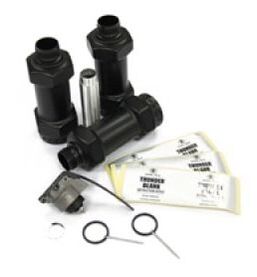 Courtesy APS Concepts Courtesy APS Concepts
True gas flashbang designs have a balloon-like shell that expands under gas pressure and ruptures or “pops.” Pressurized gas is provided by a 12g CO2 cartridge or “green gas” to basically rapidly inflate a balloon that then pops with a loud bang. These have a single use shell (“balloon”) and reusable core which consists of the fuse mechanism and gas cylinder or cylinder holder.
Rupturing shells are single-use consumable items, often sold in twelve-packs. Cores are reusable multiple times as are some bodies. Depending on the model and the user, some timers can be modified. Timing is often dependent on the type of the body purchased with the manufacturer specifying the delay. “Green gas” is a propellant that is user-refillable for airsoft weapons, similar to a butane lighter refill. Green gas is pressurized propane gas mixed with lubricants such as silicone, which is flammable, though the amount of gas expelled from a banger grenade is minimal. Gas powered grenades should not be mixed with pyrotechnic weapons and use in lethal combat situations may be contraindicated. Without an external source of flame, the chance of a fire is much lower than a pyrotechnic grenade.
Bodies are typically round but some products may feature anti-roll hex ends (“dumbbells”) like some genuine flashbangs to limit rolling. The Thunder B series of reusable gas grenades has the widest variety of bodies/shells available. Note that cores and shells/bodies are often sold separately due to the reusable nature of some products. Replacement shells, pins/spoons, and extra gas or cylinders should be purchased before any anticipated emergency.
Gas powered grenades are based on “fragmentation” type airsoft grenades that expel plastic BBs instead of lethal shrapnel. The bodies are engineered failure points to enable the shell to rupture so the BBs can escape. Early airsoft and paintball grenades shot out, respectively, BBs or paint to “kill” the enemy. With high pressure gas alone for “bangers” there are no fragments, though many BB “frag” grenades have empty shells that can be filled. These airsoft frag grenades tend to have a softer report than bangers, which are optimized for sound though some newer designs may produce both a louder report and spray of BBs. Law enforcement uses similar “Stinger” grenades in riot/crowd control but using harder rubber balls or chemical irritants. The spray of BBs is non-lethal and non-injurious to a protected person, although the greatest risk of serious injury to an unprotected person would be a pellet striking an eyeball. Thus, care should be exercised if these are deployed outside training or a game.
Pro:
Con:
Pyrotechnic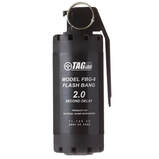 Courtesy TAGinn Courtesy TAGinn
Pyrotechnic flashbangs are essentially fused firecrackers in a grenade-like shell with the triggering mechanism a pin-and-spoon. They are the only non-electric type to produce a flash. While these are combustible items, unlike military/law enforcement grade flashbangs, these contain less powder and do not create the same level of noise and flash. Some models are available to law enforcement only for training purposes and generate much louder sound levels.
For defensive usage, bodies constructed of foam should be used, rather than hollow cardboard or plastic, to ensure crush resistance. In combat, one may need to drop prone suddenly or make other sudden movements that could result in damage to a grenade body. Accidental detonation is very low-probability, but not impossible, though use of standard airsoft/paintball protective gear is sufficient to safeguard the user. The products are considered flammable, but many products have been designed to mitigate the danger of fire should they land in dry grass or other combustible debris. Some versions do spray sparks similar to small fireworks. Pyrotechnic grenades are subject to HAZMAT shipping which will entail higher charges, adult signature, and receiving a package with a prominent explosives warning sticker.
The flash effect is enhanced at night or in dark spaces. Smoke is produced, but not to the degree of a true, concealment smoke grenade. Bits of foam or cardboard may be blasted around but should produce no injuries. The debris, smoke, and flash may be used to enhance their psychological effect or it may lead some to wrongly conclude an explosive detonated, which could be a concern in the case of political prosecutions.
For those in search of a turn-key solution, these are the best option. No loading or other prep work is required, although one may want to secure the spoon and pin with electrical tape in the event of a mishap.
Pro:
Con:
Note: TAGInn, the leading maker of pyrotechnic grenades is Russian, so the supply dried up in the West due to the 2022 economic sanctions as a result of the invasion of Ukraine. Supposedly the company was looking to start a Western subsidiary, but I have not seen any evidence of that coming to fruition. These grenades are not hard to build, and I do seem to recall a similar one with a cardboard body in the past, but I have not seen any available online.
Blanks
The newest MILSIM distraction grenade, blank cartridge devices are gaining popularity. These use .22 caliber nail gun cartridge blanks a.k.a. powder-actuated fasteners (“Ramsets”) as the sound generating device. While the design is currently proprietary, they are billed as the loudest grenades available. The report sounds like a gunshot, however (video: language warning).
Nail gun fastener blanks are available at many hardware stores. These tend to be the loudest versions and may have selectable degrees of loudness, depending on the product. These are reusable and considered very reliable. Excluding damage to the body and replacement of safety pins, these are probably the most cost-effective options. To load, the timer delay is set, a blank is inserted, the body screwed closed, and the safety pin is inserted. To deploy, the safety pin is pilled, the grenade thrown, and the impact-actuated timer will be activated on contact with the ground. No flash will be produced. Pros:
Cons:
Electronic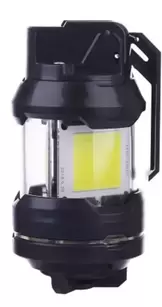 Courtesy Zhenduo Toys Courtesy Zhenduo Toys
As of this writing, electronic distraction grenades are uncommon. Strobe lights in dark environments are known to produce a disorienting effect. One would think something so simple would be a common product as it could simply be recharged after each game, but alas, they are not. Electronic flashbangs are basically personal alarms intended for self-defense use in jurisdictions where guns and pepper spray (OC) are illegal.
Nextorch Distractor video (not pictured) These include strobe lights with a loud speaker inside to blare an alarm (not an explosion). These are reusable and rechargeable products. Some models have more grenade like features, but also some only have a strobe light. These may be used as a rescue signaling device or in combination with a non-flash grenade, but don’t have the same effect as a true flashbang. For strobe light usage, an actual purpose-built strobe is probably best.
Pro:
Con:
Conclusion
It must noted that any flash effect produced, if at all, will not be as effective as a military/LE grenade, nor will the sound/concussion. These are mainly psychological devices, rather than a weapon that will produce involuntary physiological reactions. For more information regarding airsoft grenades, including smoke grenades, and the employment of these devices and other methods of riot/crowd control, please see my books Suburban Defense and Suburban Warfare.
"But I could just use a firecracker/firework." You need matches or a lighter to ignite a firecracker and most fireworks. This adds precious time to the deployment process which you might not have. Also, these are much more likely to be regarded as destructive devices than a noisemaker. Fireworks also carry a higher chance of injuring those on the ground or the user, as well as starting a fire. The author is providing this content on an “as is” basis and makes no representations or warranties of any kind with respect to this content. The author disclaims all such representations and warranties. In addition, the author assumes no responsibility for errors, inaccuracies, omissions, or any other inconsistencies herein. The content is of an editorial nature and for informational purposes only. Your use of the information is at your own risk. The author hereby disclaims any liability to any party for any loss, damage, or disruption through use of the information.
Note: dB levels may be variable based on the source and distance measured at. All should be considered as loud as an unsuppressed gunshot and hearing/eye protection should always be used. No retailer endorsement is implied. These products tend to sell out easily and fast, especially the more effective models.
Fighting in and around a car is a bad idea. Situational awareness should be primary so that things never progress to the gun stage on either side. Never put yourself in a position where the fight begins when a criminal or carjacker raises a gun at your side window. Your best defense in a gunfight once things have gone sideways in or near a vehicle is to drive away or use the vehicle itself as a weapon. From there you can assess and fight from a more advantageous position or flee.
Holster your gun on your body so you have it in the same place you would expect it if you fight on foot. This helps you with muscle memory and allows you to retain the gun after a crash or if you have to get out. In 1986, Special Agent John Hanlon lost his gun after it slid off the seat in the collision that began the infamous FBI Miami Shootout. Rifles and long guns should be wedged between the seat and the center console on the inner side of the vehicle. Avoiding obstructions, roadblocks, and bad parking places is key to surviving an ambush. Park away from people and cars, nose facing out. Watch your surroundings and mirrors. Stop in traffic where you can see the rear tires of the car in front of you and try to choose lanes and routes where you aren’t hemmed in by solid barriers. Look far ahead down the roadway and avoid any potential protests/riots, checkpoints/roadblocks, and traffic jams. If attacked, drive the vehicle out of the target area whenever possible. Use the vehicle’s speed, size, and weight to your advantage. Use unpredictable escape routes that may include driving on sidewalks, lawns, or sideswiping other cars if necessary. Even consider slamming on the brakes while driving if a mobile shooter pulls up next to you. Should you be unable to drive away or run away, fight outside the vehicle. It may be appropriate to engage the target while still in the vehicle, before getting out, such as a few shots through the glass at a very close assailant, but avoid treating the vehicle like a little fort. Keep fighting as you exit the vehicle. Move to actual cover if you can. Put the maximum amount of automobile between you and the bad guy. Stay low, crouch, and do not fully stand up when fighting around a vehicle. Do not hug the body panels of the vehicle. Stay back a few feet. Resist the urge to rest your arms and weapon on the hood. This will expose too much of your body and bullets can skip across the hood. Take a knee and get low; shoot through the windows if you have to but don’t stand up and expose yourself through the glass like a naked person in a hotel window who thinks they’re invisible. If you have to shoot inside a car you may suffer irreversible hearing loss as gunshots are magnified by confined spaces. Be mentally prepared for tinnitus and eardrum pain. Dust, gun gases, and bits of glass will be stirred up. If you have occupants, be sure not to shoot them and remember that they could be hit while you choose to fight vs. flee. Shooting through a windshield You can easily shoot through a windshield. There will be some deflection, but at near distances. not enough to matter. The first round through a windshield will likely have the most trouble penetrating; this can be true of any shots that go through undamaged glass. Make your first shot a good one, well placed on the target without consideration to the deflection the glass may cause. Returning fire is more important than trying to dope the glass. Don’t try to adjust your aim based on the bullet holes/impacts on the glass. Pick an aimpoint on the target, keep your aim steady, and fire at that spot. Your intent should be to saturate your target with bullets to get a hit. Even if your shots are less than square range accurate, they may provide a suppressing effect on the bad guy if he isn’t expecting to be shot at. For rifles in particular, if you have the ammo, blow out a large enough area of glass to shoot through the resulting hole. This is called “porting” and it typically takes three to four shots to make a hole large enough to shoot well out of. Put the muzzle up to or through the hole. Shoot out of the hole you made and each bullet will fly to the target true to your aim because it will not contact the glass. (You shouldn’t be shooting from inside if you can help it). Don’t just “aim low” when shooting through the windshield “because the first round will go high.” The first shot (going out) will likely deflect high, but your subsequent shots, unless you are shooting through undamaged glass, will generally not behave the same way. Shots will behave randomly depending on different variables—did the bullet catch the edge of the glass, etc.?—but will land within center of mass if that’s where you’re aiming. The effect windshield glass has on bullets Note: Much of this is academic. Bullet deflection is a problem when precise shots are made, but at close distances, say a few yards, it does not practically matter. Don’t worry about up/down, inside/out deflection. Returning fire, suppressing the threat, and getting out of the car or away from the kill zone is primary. Copper jackets will separate from the lead in a bullet almost always when hitting glass. Jacket fragments may impact the target, passengers, or bystanders. Bullets may be deformed and have reduced performance on target, including keyholing. This is where contact with the glass causes the bullet to yaw in flight impacting the target sideways at lower velocity, producing a hole that looks like a keyhole. Windshield glass is laminated and side/rear window glass is tempered. Windshield glass tends to hang together rather than breaking apart. Side window safety glass breaks into chunks instead of shards. These chunks are difficult to get cut with even on purpose. Windshields are the most resistant to damage and are more likely to spiderweb than shatter. Holes will form and bits will come off, but they almost never will shatter in your lap. Windshields are angled to deflect the wind. The degree of slope varies between vehicles. This slope affects bullets because when the bullet enters, it will make first contact either high or low. That is, the “top”[1] of the bullet will impact the windshield first going out, since the slope makes the high side closer to the “top” of the bullet. Going into a vehicle, the “bottom” of the bullet will make contact with the bottom of the glass first. This is what causes deflection. Shooting out from inside, the bullet will go high because of this effect. Conversely, when shooting into a vehicle through the windshield, the bullet will go down and strike low. This is why some trainers tell students “Aim low when shooting out and aim high when shooting in.” In practical terms this doesn’t matter. Note: this an adaptation from my non-fiction book Suburban Warfare: A cop's guide to surviving a civil war, SHTF, or modern urban combat, available on Amazon. Don Shift is a veteran of the Ventura County (CA) Sheriff’s Office and is a student of emergency response, disasters, and history. He is the author of several post-apocalyptic survival novels about nuclear war, EMP, and the non-fiction Nuclear Survival in the Suburbs, and the Suburban Defense/Warfare guides. His website is www.donshift.com. [1] Top and bottom are relative because a bullet is spinning. Situations like this will happen and that means that citizen defenders will have to engage in Close Quarters Battle (CQB). CQB is almost always fighting done indoors. It is a specialty of SWAT teams and Tier 1 military forces the world over. It is a highly dangerous way to fight and demands special tactics be used. Speed, surprise, dynamic entry, and violence of action are hallmarks of CQB. In some cases you may have to go in a building or room occupied by a bad guy. That means you may have to breach a door.
In my previous two books (Suburban Warfare and Suburban Defense) we discussed use of less-lethal shotgun rounds in detail. Another specialty shotgun is the breaching shotgun. This commonly available weapon and ammunition can give the citizen defender the ability to rapidly and effectively breach doors without resorting to power tools. Breaching shotgun A breaching shotgun is a valuable tool that can provide faster entry than manually prying or beating down a door. These typically are stockless and short-barreled weapons with a special crenelated muzzle device to ensure proper standoff of the muzzle from the door. Only pump-action weapons are used because many breaching rounds lack the power to properly cycle a semi-automatic action. Until recently, many of these weapons were legally Short Barreled Shotguns (SBS) under the National Firearms Act (NFA) and required a lengthy background check and an extra tax for barrels under 18”. These new “firearms” that are manufactured in a way to take advantage of loopholes in federal laws to essentially create pistol-gripped shotguns with 14” barrels. These are known as the Mossberg Shockwave and Remington TAC-14. Currently they are available the same way as any other firearm is in most states. Should they be legally registered as a SBS or in a WROL situation, they can be fitted with stocks. Note that muzzle devices have to be added by a gunsmith in some cases. Choke style devices are also available but they may not fit all guns. Purpose made 18” barrel shotguns with these devices with and without pistol grips are fairly common. These devices can also help with flash suppression to preserve night vision and help control recoil. A special shotgun for breaching purposes should be used rather than mixing shells in a shotgun meant to shoot humans. Note that ordinary birdshot and buckshot rounds should not be used; death or injury could occur. Breaching rounds are specially made to be fired at close range. The most common variant is powdered steel with a wax binder. These are commercially available. Other types are made of copper or other frangible materials and a soft binder. Note that while frangible shells are intended to not be lethal or even particularly injurious a few feet away, this is after they’ve disintegrated against a barrier. Without hitting a barrier, many of these payloads essentially act like slugs as they haven’t hit anything to break them apart. In some respects, this is similar to a birdshot cut-shell slug. Breaching rounds need to be treated the same as lethal shot. The shot is designed to physically break the door material and the latch mechanism. Unlike the movies, shooting at the knob or lock itself does not work and can cause ricochets. Once the frangible shell material hits the door, it breaks up and tears through the wood or steel. The intent is to so severely weaken the door material that the latch bolt is no longer capable of resisting any force or that the bolt itself is blown away. Note that some doors are hardened and may take extra shots. Breaching shotguns are carried on a sling to be stowed out of the way of the breacher’s primary weapon when clearing rooms. The gun is actually carried with the safety off, but no round chambered, until just before firing. Then a live shell is racked into the chamber and fired. Empties are not ejected. This is to allow the gun to be carried safely without having to fumble for a safety catch in a critical moment. Purpose-made breaching muzzle devices helps to “bite” in to the door for correct positioning, which is halfway between the frame and the knob/deadbolt. If shooting at the hinge, standard procedure is to fire three shots at each hinge. Firing at the latching mechanism is preferred because it takes less shots and most doors open inwards, concealing the hinges. Shooting at the hinges is really not preferred. This requires 6-9 shells and a degree of luck. The door may be harder to pry open than the latch side and all of this may take precious time while an enemy knows where you are. The hinge pins can be knocked out instead or another entrance can be found. Both wood and steel doors can be breached with a shotgun. The difference is the aiming angles and the resistance offered by the individual door. Steel door skins may deform when shot, jamming the door closed so a different technique needs to be used.
Once you do get the door open or are proceeding through a secondary entrance, you will need to deploy diversionary devices like smoke, flashbangs, or stun grenades. There may be no surprise, but hopefully you’ve disturbed the bad guys’ reaction. If you still can’t gain entry, it may be time to consider other tactics such as a siege or deploying pepper spray grenades (as CS/tear gas is not commercially available to civilians). Note: this an adaptation from my non-fiction book Suburban Warfare: A cop's guide to surviving a civil war, SHTF, or modern urban combat, available on Amazon. VIDEO: Shotgun breaching techniques Note: this an adaptation from my non-fiction book Suburban Defense: A cop's guide to surviving riots, civil war, SHTF, or modern urban combat, available on Amazon Much of this advice may only apply in life-threatening circumstances, such as near-WROL (without rule of law) and WROL. Your state may have new protections for motorists in riot/protest type situations. Not all states have adopted enhanced protections for motorists. Look up your local laws and obtain an attorney’s advice. If things go pear shaped in the world, get used to driving with your windows up and the doors locked. This is a standard practice in third-world countries or bad neighborhoods. The glass is just one more obstacle an attacker has to overcome. It also prevents them from just reaching in to open the door or assault you, plus it keeps thrown objects out. If you must lower your window, drop it no more than two inches, just enough to talk. There will always be cameras and video of any incident where you have to use force with/from your vehicle. Thugs will obtain your license plate and turn that over to authorities. Whether or not you will be prosecuted will depend on your conduct and the politics in your area. You should also expect that you will be personally exposed and your home and your employment targeted by a vindictive Internet mob even if you escape any legal charges. \ Should police become involved, any defensive driving was a use of force, the same as shooting someone. This was not a traffic collision. Never make a statement to police. Shut up and ask for an attorney. Do not talk to the police. Be observant or face the consequences. In 1992, America watched as Reginald Denny was beaten nearly to death because he drove into a riot listening to country music instead of news radio that might have warned him of the chaos at Florence and Normandy.
In a semi-rule of law situation or when protesters are just being jerks, don’t escalate the situation. Remain calm and get through the moment without being shot or arrested. Getting out of the vehicle only exposes you to risks. Yelling at the protesters won’t get you through and may provoke them to violence. You are playing into their hands by getting angry so they can escalate their behavior. If you have to drive through a crowd
Keep your doors locked and windows rolled up. Keep your firearm secure but handy in your holster. Consider where your gun is and what happens if you have to stop suddenly. Keep it on your body if you have to bail out of the car in a hurry. If you must draw your gun, keep it out of sight of the rioters. Don’t let them see it as it may escalate the situation or they may shoot you. If the mob is non-violent and you are stopped, don’t try and force your way through. Forcing your way through a non-violent crowd will aggravate the crowd and will turn you into the aggressor. It is frightening and you will be infuriated, but in most cases it will be over soon. Don’t give into people trying to incite a reaction by becoming hostile. If the mob is violent, don’t stop. Moving slowly at a predictable pace allows people (who are willing) to get out of the way. It could also be considered reasonable, or proportionate force, to move just enough to get your vehicle out of danger while giving the protestors a chance to flee. Don't get out of your vehicle unless it is disabled. Even if the protesters are forcing their way in, it is easier to defend yourself from inside the vehicle. Think of it as a cage that keeps them (mostly) out. Only exit your vehicle if it is disabled or on fire. If your car is breached, you may have a right to self-defense in your state, a “castle doctrine” in your vehicle. Your legal standing and physical safety are better with the car around you. Don't run people over if you can avoid it. Remember that using your vehicle as a weapon is a crime; deliberately running someone over is murder. A vehicle vs. pedestrian self-defense claim may be difficult to argue. All of your actions must be deliberate at this point to minimize injuries and get you out of the crowd. Your vehicle may have an impact shutoff sensor and you may find yourself in a disabled vehicle surrounded by a hostile crowd. While driving through a crowd, they will beat on your car body, the windows, and try to vandalize the car. They may even succeed at breaking windows. Jumpers will try to get in front of the vehicle, on the hood, roof, or in the bed of a truck. The crowd will already be mad at you for driving through and will take it as a mass personal affront if you start hitting people. Most drivers stop when they hit someone. The mob then surrounds the car and tries to force entry. As the driver panics and tries to get away, they hit the gas and strike more people at high speed. Stay calm and don’t panic. Control yourself and think your way out. Utilize openings in the crowd or drive though non-roadway areas like lawns to get away. Drive until you are not just away from the rioters/protesters, but also out of sight. You might feel safe a hundred yards away in a clear street, but they might be pursuing you. In Los Angeles in 2020, protesters employed a chase vehicle that literally chased down someone that drove through a pursuit. Best Practices
Vehicular self-defense legal principles Barring any new (as of 2021 laws), standard self-defense laws apply even in vehicles. You cannot hit someone with a vehicle on purpose in self-defense unless they are an imminent threat to your life. A vehicle is deadly force versus pedestrians or even occupants of other vehicles. People die in car accidents all the time so I hope I don’t have to explain further. You must have an actual, reasonable fear that if you stop or don’t hit that rioter, you will be seriously injured or killed. Remember that crowds will likely take your vehicle to be a lethal threat and act in their self-defense, regardless of the purity of their motives. Your behaviors may take a riotous mob that wanted to harm you and turn them into the victims. Expect that even in a WROL situation, the mob will try to shoot you in their defense. You cannot drive through the crowd merely because you were afraid. A “bare fear” is not enough to justify lethal force. You need to have an actual threat with imminent danger (and be able to articulate it), such as someone pointed a gun at you, they broke the window and were trying to pull you out, a Molotov cocktail hit your vehicle, etc. Seeing someone pulled out and being beaten to death in front of you like Reginald Denny could be a good justification if you had a real fear of the same happening to you. An armed attacker in another (moving) vehicle would probably be a legitimate use of ramming against a vehicle. Smashing your car into their car could shake the aim of the gunman or screw up their firing position. The other vehicle could crash. An armed motorcyclist is easier; just slam the car into the bike and knock it down. Be aware that any collision may cause your vehicle to become disabled or crash. Remember that in leftist jurisdictions you may be prosecuted for a use of force against protesters, even if morally or ostensibly legally justified. In Texas, an off-duty Army sergeant was driving for rideshare when he was confronted by a protester with an AK-47 who pointed the rifle at the car. The sergeant drew his pistol and fatally shot the man with the AK. He was charged with murder over a year later and of this writing will shortly be going to trial. The information contained in this work does not constitute legal advice and should never be used without first consulting with an attorney or other professional experts. No endorsement of any official or agency is implied.
The content of this work is of an editorial nature and for informational purposes only. Your use of the information in this book is at your own risk. The author and publisher hereby disclaim any liability to any party for any loss, damage, or disruption through use of the information in this work. Shooting through a windshield
You can easily shoot through a windshield. Way back when, the California Highway Patrol had this stupid theory for its officers to stand in front of the A-pillar looking in at the driver because they assumed that no one would shoot out his own windshield. Bullets will hit targets with fair accuracy when fired through a windshield. There will be some deflection, but at near distances not enough to matter (more on this later). When sitting properly with one’s face away from the glass, shards and chunks should not injure the eye. Normal glasses and sunglasses should provide adequate protection in extremis. I’ve seen a lot of car accidents in my time and glass in the eye causing a serious eye injury is uncommon. Obviously full eye cup protection with ballistically rated lenses are preferred. The first round through a windshield will likely have the most trouble penetrating; this can be true of any shots that go through undamaged glass. Make your first shot a good one, well placed on the target without consideration to the deflection the glass may cause. Don’t try to adjust your aim based on the bullet holes/impacts on the glass. Pick an aimpoint, keep your aim steady, and fire at that spot. Your intent should be to saturate your target area with bullets to get a hit. Even if your shots are less than square range accurate, they may provide a suppressing effect on the bad guy if he isn’t expecting to be shot at. If you have the ammo, blow out a large enough area of glass to shoot through the resulting hole. Since you’re so close it’s going to be easy to blow a hole in the glass large enough to keep shooting out of. Shoot out of the hole you made and each bullet will fly to the target true to your aim. Your muzzle will probably be only inches away so it won’t be difficult, even under stress, to do this. Close up, this is your best bet to quick, accurate shots. Enlarge that hole. This is called “porting” and it typically takes three to four shots to make a hole large enough to shoot well out of. Within typical pistol distance, your shots, if well aimed in the first place, will not deflect enough to matter. You will probably get effective shots on target. Keep in mind that shooting out your windshield makes it a little easier for incoming bullets to hit you. There are now holes in it and it has been weakened. Don’t just “aim low” when shooting through the windshield “because the first round will go high.” The first shot (going out) will likely deflect high, but your subsequent shots, unless you are shooting through undamaged glass, will generally not behave the same way. Shots will behave randomly depending on this or that variable—did the bullet catch the edge of the glass?—but will land within center of mass if that’s where you’re aiming. You probably will flinch when the glass breaks and pieces hit you in the face. This is a natural reflex. Glass will get everywhere when a car is shot up, but again, it will not be much of a hazard. Clean up will be necessary and you will want to check your clothing to make sure any glass has been removed from it. If you have to shoot inside a car, it’s gonna be loud. You may suffer irreversible hearing loss. Family and passengers will probably start screaming. Tinnitus will occur while shooting. Gunshots are loud and they are magnified by confined spaces. Reduce the trauma to your ears by rolling the windows down, at least two. The more shots you fire, the more likely you are to hurt your ears. Rolling the windows down may help reduce the reflection of the soundwaves and will also vent any gas or dust. The effect windshield glass has on bullets Note: Much of this is academic. Bullet deflection is a problem when precise shots are made, but at close distances, say a few yards, it does not practically matter. Don’t worry about up/down, inside/out deflection. Copper jackets will separate from the lead in a bullet almost always when hitting glass. Jacket fragments may impact the target, passengers, or bystanders. Bullets may be deformed and have reduced performance on target, including keyholing. This is where contact with the glass causes the bullet to yaw in flight impacting the target sideways at lower velocity, producing a hole that looks like a keyhole. Windshield glass is laminated and side/rear window glass is tempered. Windshield glass tends to hang together rather than breaking apart. Side window safety glass breaks into chunks instead of shards. These chunks are difficult to get cut with even on purpose. Windshields are the most resistant to damage and are more likely to spiderweb than shatter. Holes will form and bits will come off, but they almost never will shatter in your lap. The rear window will shatter into chunks if you look at it funny but the side windows are a little tougher. Windshields are angled to deflect the wind. The degree of slope varies between vehicles. This slope affects bullets because when the bullet enters, it will make first contact either high or low. That is, the “top”[1] of the bullet will impact the windshield first going out, since the slope makes the high side closer to the “top” of the bullet. Going into a vehicle, the “bottom” of the bullet will make contact with the bottom of the glass first. This is what causes deflection. Shooting out from inside, the bullet will go high because of this effect. Conversely, when shooting into a vehicle through the windshield, the bullet will go down and strike low. This is why some trainers tell students “Aim low when shooting out and aim high when shooting in.” In practical terms this doesn’t matter. Unless you are a sniper or taking really long shots that must be precise through unbroken glass, you shouldn’t concern yourself about this. This doesn’t apply to the nearly vertical side windows which are not as thick or tough as laminated windshield glass. Rear window glass also shatters a lot more easily although it too may be angled. Note that a lot of quality side glass won’t shatter into little pieces when shot but will tend to remain intact up to a point. Your mileage may vary. Note: this an adaptation from my non-fiction book Suburban Warfare: A cop's guide to surviving a civil war, SHTF, or modern urban combat, available on Amazon. [1] Top and bottom are relative because a bullet is spinning. So I’ve been writing part of a hopefully upcoming novel where one of the characters, a former Navy SEAL and Hollywood armorer, builds a technical (if you don’t know what that is, think of a Toyota in Africa with a gun in the bed). Okay well, he’s asked to mount a machine gun to a small pickup truck. Easy enough; the guy can weld and has a bunch of gun parts lying around. The problem is that there is no proper machine gun to use.
On Twitter, I saw a discussion about a desire for technicals. While welding weapon mounts and bed rails so the gunner doesn’t go flying out isn’t hard, pieces of specialty machinery will be harder to come by in say a fictional world where an EMP just detonated like in one of my novels. Like my character and the average Twitter user, there are a few common problems.
First, buy what you can. Order that M60 gooseneck pintle or a MK 64 cradle mount. KNS sells a Picatinny rail adapter that can attach to quad rails or whatever. Are you going to make one yourself out of some steel and ball joints? Better order those carefully machined parts now while you can still go to specialty hardware stores or order online. If you are a fictional character who may have a future need for a machine gun mount, there is no harm in laying it by early. A vintage tripod might be a good collectable for the corner. Next, buy the gun accessories. Are you adapting an AR-15 because everyone has like 12? Buy a spade grip adaptor, which seems uncomplicated enough to fabricate in a garage. Need taller sights to shoot when standing up? Buy those. Note that AR-15s are terrible sustained fire weapons. You’ll blow the gas tube after about 300 rounds of sustained fire, so you’ll need a quick change barrel adaptor, or like three, which will get expensive. Or an extreme duty gas tube. A heavy barrel is less of a concern than an exploding gas tube that will turn your rifle into a straight-pull single shot. How is it going to fire fully automatically? Well, in my novel a 3D printed lightning link is used. The AR-style open bolt conversions, as used in the M231 firing port weapon, have a tendency to batter and walk out pins, I am told. Yes, in fiction I could have my character just fit a full-auto parts kit in as he did to some rifles, but like in reality, he didn’t have that many to begin with. You’ll probably have zero. If you think you may capture a weapon, have your own ammo supply. There is no harm in buying linked 7.62mm or 5.56mm ammo to feed that ex-government M240 or whatever. You can always unlink it and shoot it or reuse the links. Buy tracers while you still can. If you’re shooting a machine gun, especially one from a vehicle, you’ll want it. Beta Mags and Magpul D60s could get banned too. Here are some pictures of cool weapon shields. Note the attached pieces of pipe to route the empty cases into an ammo can. Anyhow, some fun ideas. Stay tuned for the what hope is another novel in my EMP series. The term “drone” has become synonymous with Unmanned Combat Aerial Vehicle, or UCAV, and small UCAVs have become common in modern warfare. Small, modern consumer drone has become a staple of irregular warfare. Cartels have mounted automatic weapons on drones and ISIS used them to drop bombs on their enemies. No longer a plaything or innovative camera platform, drones will be used in any domestic conflict in the United States. To date, irregular forces have used drones for:
ISIS often dropped munitions out of a plastic tube when released remotely by a servo motor. 40mm grenades were popular with ISIS as they were light and could be lofted easily by consumer Quadcopters. Larger drones can drop 60mm and 81mm mortar bombs. Homemade bombs often using plastic explosive have been seen in Latin American cartel wars and in the Middle East. Weapons don’t need to be dropped; a more accurate strike, at the cost of the drone, can be delivered in a kamikaze attack involving terminal guidance to the target and detonation. Payloads depend on speed and range required. Maximum payload for a large quadcopter is about 4-5lbs. Optimal payloads are on average half a pound or less, up to 1.25lbs or half a kilo. About 1lb of C4 explosive is enough to destroy a truck. Bare explosives can be studded with ball bearings or other metal to create shrapnel; however, this may take the weight limit over what small drones can carry. In addition to the above discussed surveillance and reconnaissance roles, armed drones will be used in direct combat. Area fire that is ordinarily accomplished in militaries by mortars, artillery, and grenade launchers will be done by drone. Americans just won’t have access to these weapons the same way that Afghans and Iraqis did. Explosive armed drones themselves may be flown directly into targets and detonated in the same manner as militaries employ missiles. Drones may be used in the following manner to kill:
Immediate action drills
Shooting down drones Shotgun drone shootdowns are not uncommon. To date, it has largely been on the range, by an annoyed neighbor, or by an angry man who caught the drone peeping. Based on the limited information provided, these drones were close and not attempting to evade. Drones engaged in combat operations will try to remain as distant as possible and should evade, making a shootdown more difficult. Drones are designed to be lightweight and thus quite fragile. They can be easily damaged by high velocity projectiles. Any impact may cause the drone to lose orientation and crash; the more violent the better. Shotgun shells may be the best chance at shooting down a drone at low level and a good skeet or trap shooter should be the one to make the attempt. Range, altitude, and the drone’s speed will all factor into the ability to hit it as much as the ability of the shooter, the gun, and the ammunition used. Wind, temperature, and altitude can affect range as well. Birdshot: No. 8 shot is reported to be effective, but at an unknown altitude and range. Magnum shells and specialty loads may have additional capabilities. Buckshot: Because buckshot has more mass, it has a horizontal range of up to around 75 yards. The greater mass would cause more damage to a drone. Specialty shells: 12 gauge Skynet Drone Defense ammunition, a three-pack retails for $20-25 as of this writing. The shell contains six weighted tethers in a star shape that is designed to entangle the rotors of the drone, causing it to crash via loss of control and lift. Other weapons: A .177 air rifle pellet took down a drone. A felon shot down a police drone with a .22 rifle.[1] There is nothing that would rule out using an AR-15 or other type of weapon or cartridge over a drone. Jamming works by either overriding the control signal or depriving the drone from receiving GPS signals. Jammers may be difficult to purchase due to shipping restrictions and price. Some devices capable of drone or GPS jamming are available out of the box and do not require extensive technical expertise but may suffer from low signal strength and poor antennas. One such product is the Hack RF One with additional aftermarket antennas and software. Homemade models can be built if one has the technical expertise. Drone air-to-air combat Shooting down a drone with a gun is not going to work against a pilot who is anticipating anti-drone fire, actively evades, flies smartly, and keeps the drone out of range. This means that the fight will need to be taken to the offending drone. Anti-drone air superiority will become a thing. All combat is about what happens on the ground. Aircraft were first used in military applications for reconnaissance, then bombing. Naturally, the countermeasure was to develop fighter planes that specialized in shooting down aircraft. While fighter vs. fighter combat has captured the imagination and hearts of fighter pilots all over the world, the actual job of air superiority is to deny the airspace to the enemy. If fighter jets are waiting to shoot down his bombers and transport planes, he can’t use his air force to support his ground troops or attack the enemy. Though it would be expensive to have a lot of remote control planes and drones, it is possible to use drones against drones. Note however that one would have to fly their remote control aircraft physically into the drone to knock it out of the sky. For your small UCAV, this will be a suicide mission. A light and cheap drone that can climb to a decent altitude and fly fast would probably be ideal. Practice can be done with easily repairable drones. An experienced drone pilot may be able to accomplish a mid-air collision without much rehearsal. The kinetic impact should be all that is required to crash most consumer quadcopter types. Once downed, the wrecked drone should be captured for intelligence exploit or an ambush can be setup to wait for the enemy’s recovery attempt. Bottom line Are you likely to be killed by a drone?[2] It is highly unlikely. In a future destabilized America immersed in urban combat, most deaths will be caused by famine and disease, followed by gunfire, as in most wars. Drones will be problematic mostly as a reconnaissance and command & control tool. I would be more worried about a looting gang launching a drone to see who is asleep before the 3 AM attack than I am someone flying a drone with C4 through my bedroom window. Note: this an adaptation from my non-fiction book Suburban Warfare: A cop's guide to surviving a civil war, SHTF, or modern urban combat, available on Amazon. [1] US Attorney's Office press release, "Lake County Convicted Felon Indicted For Illegal Firearm Possession And Destruction Of Aircraft," October 13, 2021. [2] A civilian, consumer drone, not a government one, that is. At the end of the world, anyone who isn’t crazy is going to want a friendly eye in the sky. Helicopters are out of the question, but an off-the-shelf consumer grade drone, or small Unmanned Aerial Vehicle (UAV) can be a large force multiplier for friendly forces. The advantages that they can give defenders could make the difference in a defensive situation or even an evacuation.
Drones can provide real time intelligence from “impossible” perspectives that someone with a pair of binoculars in a tall building or on a hill can’t see. The area that one can actively surveille expands with the drone’s height and mobility advantage. They allow loitering and tracking of mobile targets. Ground units can be supplemented or supported by aerial observation. Some of the advantages drones can provide to neighborhood defenders are:
One could remotely clear intersections, curves in the road, behind hills or obstacles, for ambushes. Imagine that instead of having to send a team on foot to check out some wrecked cars in the road, your drone can simply do a fly-by to see if guys with guns are crouching on the other side. Drones are stealthy. They may not be heard or seen by people on the ground, often going totally unnoticed at high flight altitudes. Their stealth is an inherent capability due to their size. They may be operated at altitudes where the rotor noise is not heard or it easily blends in with the ambient noise. The airframes themselves are also relatively small and can be visually overlooked if flying at a high enough altitude or the model is quite small. Visual detection range is typically 100 yards and the sound can be detected at 40 yards. Drones also don’t replace tried and true methods. Just because you have a magic flying thingy doesn’t relieve you from walking your perimeter, sending out patrols, or performing inspections in person. Technology is not a substitute for using your God-given senses to further investigate suspicious circumstances. Drones can’t see everything and will change the behavior of those that they observe in ways actual humans may not. Drones aren’t just for observation. They can be used as a suppression tool. If an enemy knows he is being observed, it is likely to change his behavior. An attacker who is hoping to strike unannounced that is seen by a drone (and knows it), may abandon his entire attack. If not, the plan may be disrupted because the potential “victim” is able to tailor their defense in real time to the movement of the enemy. In on the ground human terms, imagine that a gang of thieves are getting ready to rob a jewelry store. Except next to that jewelry store is a deli and four police officers are eating lunch outside on the terrace. The robbers have to wait until the officers are gone before they can move in. Except the cops know what’s up and as soon as they are done eating, their observation duties are taken over by a patrol car. Done deliberately, this is a form of suppression. Cops do it all the time by simply patrolling and remaining in locations vulnerable to crime because crooks who aren’t totally stupid won’t do things in front of the police. Drone operation tradecraft Paint your drone in a neutral gray color as many military aircraft are painted. Treat launching your drone like a submarine raising its periscope. Periscopes pop up for just a brief span of time and are pulled back down as soon as possible. See what you need to see and land; constant observation isn’t always going to be necessary. Don’t be predictable.
Note: this an adaptation from my non-fiction book Suburban Warfare: A cop's guide to surviving a civil war, SHTF, or modern urban combat, available on Amazon. A friend who recently retired from law enforcement and I were discussing the pros and cons of less-lethal shotgun usage by the average citizen. In defensive situations, outside of very rare one-offs that are unlikely to occur, we couldn’t think of a single good example. Where it would be useful always required that the SHTF already, things were very dangerous outside, and there was no rule of law (or police). Then, and only in stand-off type situations, did we deem their usage conceivable. Normal times or SHTF times, you are likely not going to be dealing with suicidal subjects or with persons resisting arrest. You will be concerned with shooting bad guys or driving them off. A less-lethal shotgun is in the “drive them off” tool box. If you are planning for SHTF and especially if you have a defensive group drawn up for your neighborhood or homestead, why not put another tool in your toolbox? I am going to focus my scenarios on a without the rule of law situation (WROL), that is, there are no police to respond and no courts to prosecute you. If there are, they are totally ineffective to help you, deter the bad guys, or come after you for using excessive force. Wider use of less-lethal ammunition may be made where it is necessary or desirable to kinetically dissuade someone but not kill them. Further discussion regarding WROL employment of less-lethal weapons can be found in my book Suburban Defense. In WROL, less-lethal shotguns should only be employed when a lethal shot would be justified. This covers any potential legal ground as well as moral grounds. Because the weapons are still firearms and may kill, you need to treat firing a less-lethal shot just as firing a lead one. There may be a rare circumstance when killing the person is legally justifiable, but not desirable, and it is tactically permissible to use less-lethal force. Lethal cover (another person with a deadly firearm aimed at the target) must be present and ready to stop any deadly threat. Typically, in ordinary life less-lethal ammo usage should be avoided. Less-lethal force is not a substitute for lethal force, when morally and legally justified. I envision it being used when the attitudes of your homestead, neighborhood, or community may make it difficult to outright shoot someone. Mowing down a crowd of rioters, even if they deserve it, presents a lot of problems. You may also feel bad shooting a really determined and desperate father stealing from your garden. If a 12 gauge rubber slug can send them away and keep them away, it helps avoid you being labeled a murderer or war criminal. Violent crowd control
Deployment The less-lethal bearer should not have a lethal firearm at the ready; lethal weapons need to be holstered or slung out of the way. He should not be trying to juggle an AR-15 and a less-lethal shotgun. If at all possible, the less-lethal bearer should not also be armed with a lethal shotgun, nor should he have any lethal shotgun shells on his person, to avoid mix-ups. “Less-lethal ready/up!” is the announcement the less-lethal bearer is in position and ready to fire. “Less-lethal, standby!” is the incident commander or primary team member delegating the authority to fire. It also serves as a warning to those around that a less-lethal weapon will be fired. “Less-lethal out,” should be yelled and/or radioed after the shot or string of shots so distant team members know what happened. Other variations can be used as long as they are clear and unambiguous. Additionally, the type of less-lethal ammunition can be substituted for specificity, i.e. “bean bag.” Note that circumstances may necessitate immediate deployment based on the less-lethal bearer’s observations of the situation. Good communication should be maintained with the details for the need of the weapon going out so that upon hearing a gun shot, distant team members don’t mistake it for an incoming shot.
Aimpoint: lower center of torso (belly) or more specifically the belt line to the navel. Aim for large muscle groups, abdomen and below. Arms and legs should be avoided when in proximity to vital areas. The preferred dorsal target area is the legs (away from the lower spine). Avoid: head, neck, sternum (upper chest), spine, kidneys, and genitals. When firing at the target from behind, do not aim for the center of the back due to the risk of spinal cord damage. Firing at bare skin should be avoided when possible. Do not fire at pregnant women, young women, or the elderly if at all possible. Do not fire a target who may fall from height or into dangerous areas. Minimum safe range: 5 feet Minimum recommended range: 10 feet Optimal safe minimum range: 21 feet Maximum recommended range: 50 feet Optimal engagement distances: 7-25 yards Average maximum range: 40 yards
Conclusion Now in ordinary life you’re probably never going to use less-lethal ammunition against a human. I would recommend against it, actually. If you’re going to shoot them, make sure you can legally use lethal force and preferably use lead to make sure the threat is stopped. If you aren’t going to shoot them, it’s easier and less legally risky to punch them, shoot them with a Taser, or give them a face full of OC spray. But then again, the Second Amendment was written for those outside contingencies. Disclaimer: I am not an attorney nor an expert. This should not be taken as legal or expert advice. Get specialized training before using less-lethal ammunition and any action taken is at your own risk. You probably shouldn’t be using this kind of ammo against humans unless the world has really ended. |
Author Don ShiftDon Shift is a veteran of the Ventura County Sheriff's Office and avid fan of post-apocalyptic literature and film who has pushed a black and white for a mile or two. He is a student of disasters, history, and current events. Archives
May 2024
Categories
All
As an Amazon Associate I earn from qualifying purchases.
|
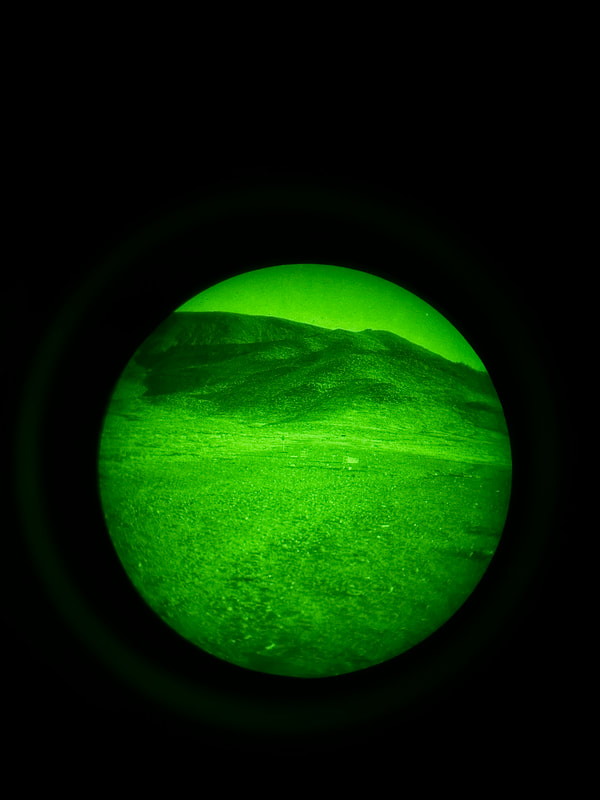
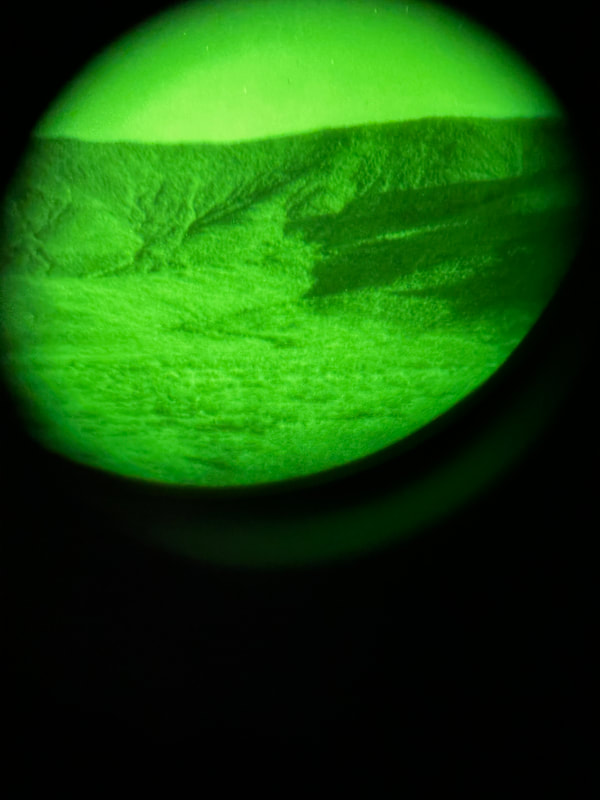

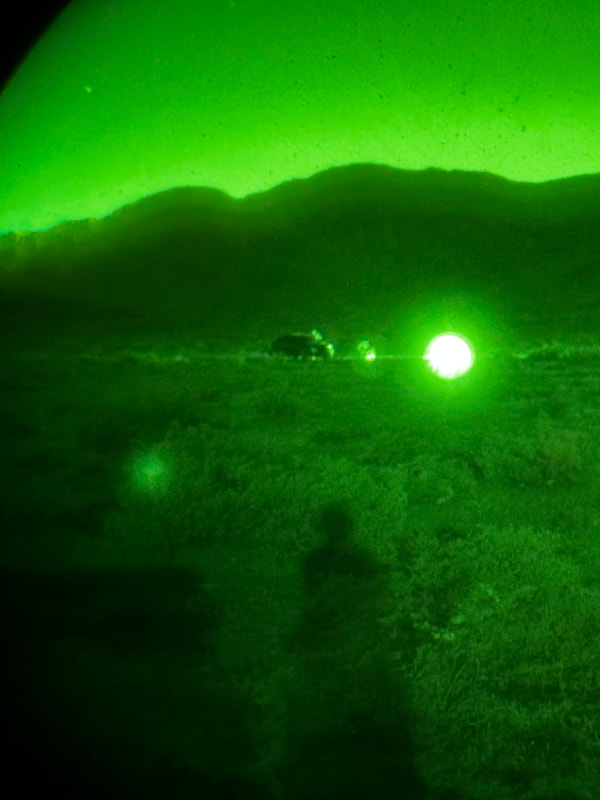
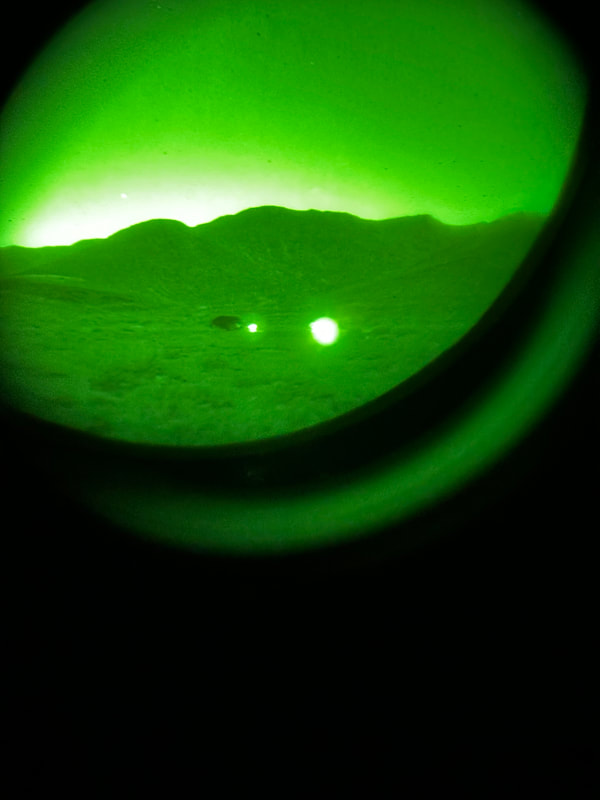
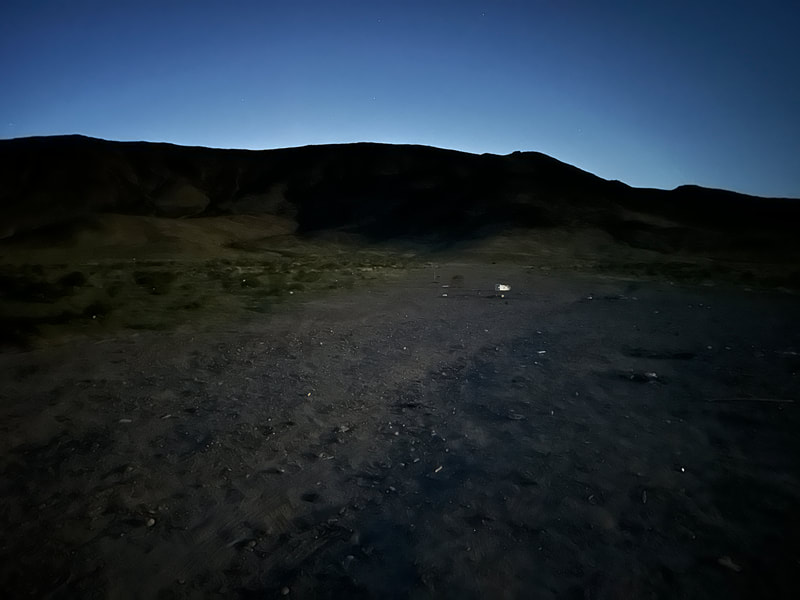

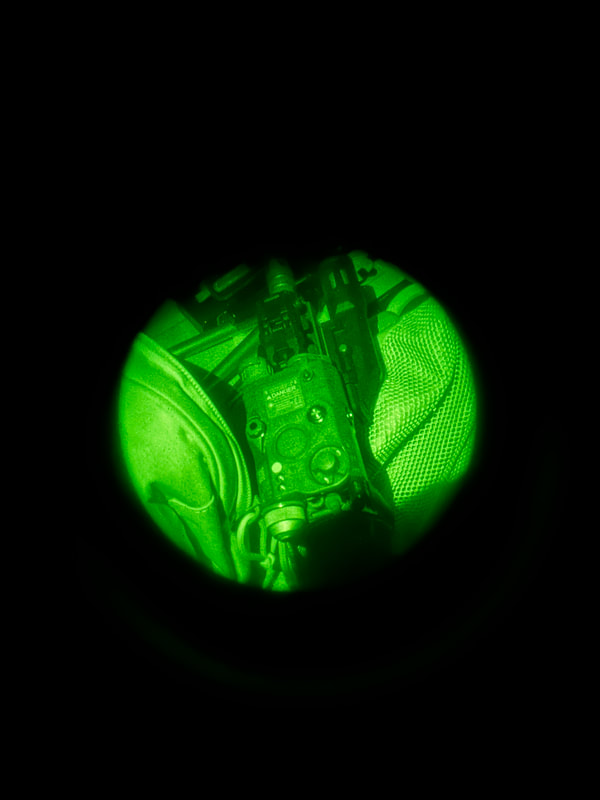
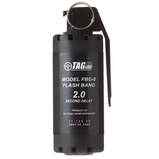
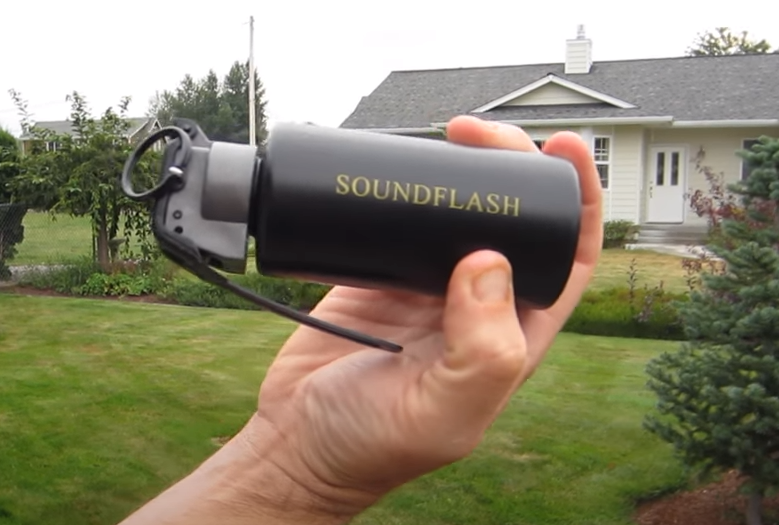
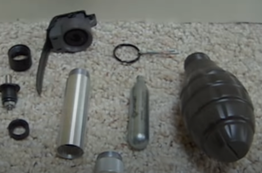
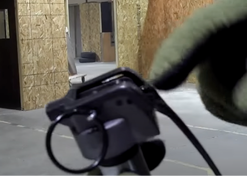
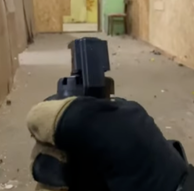
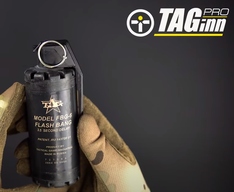
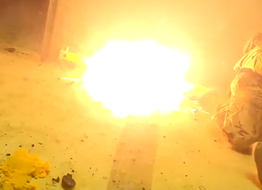
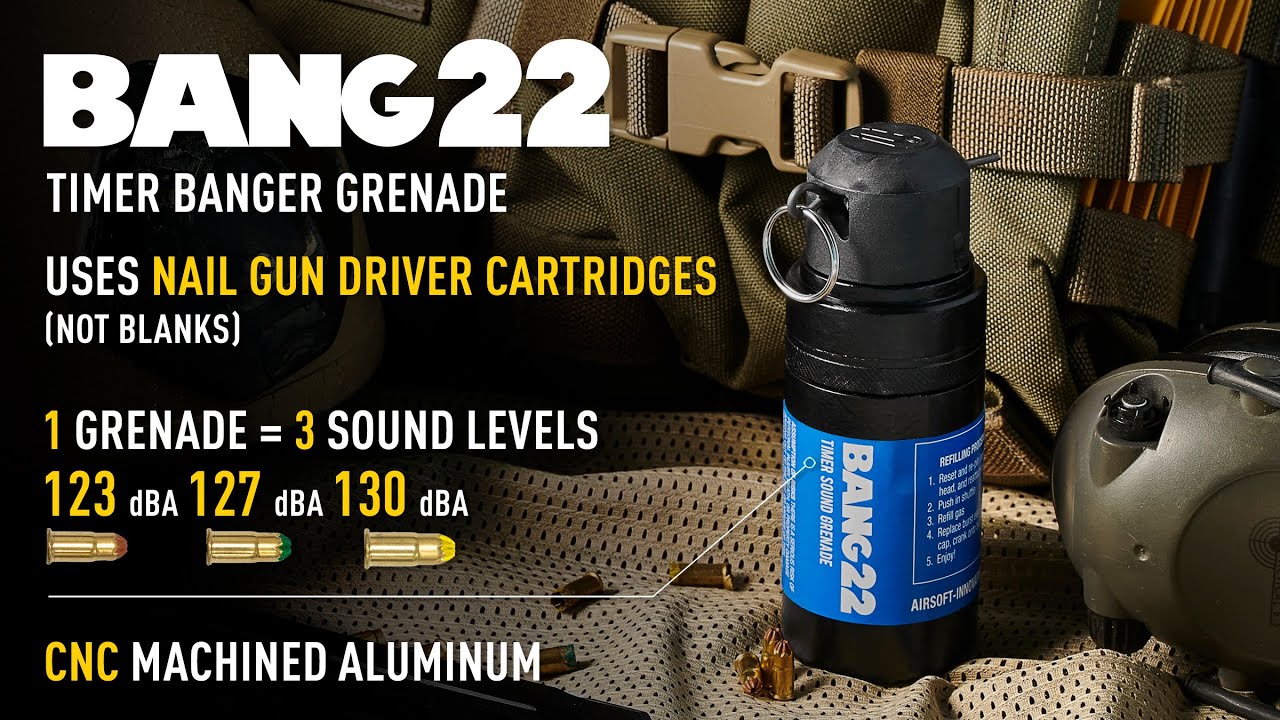
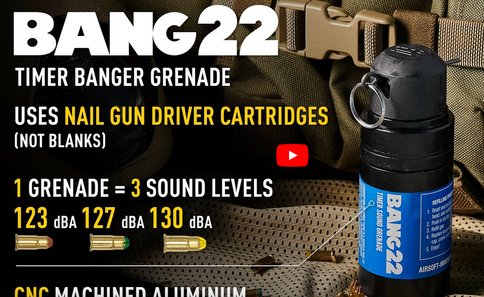
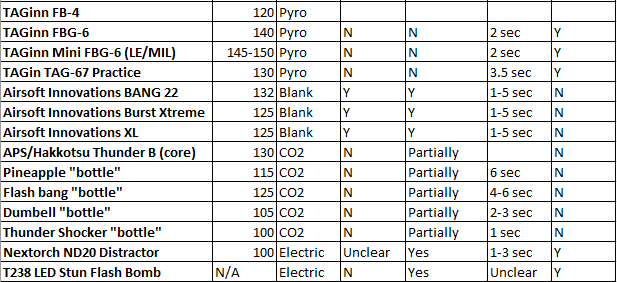
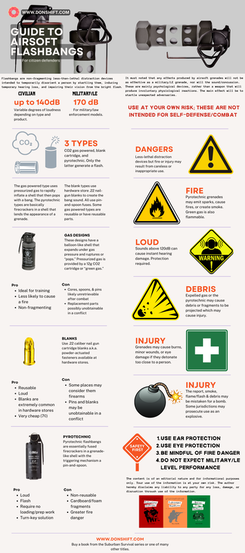
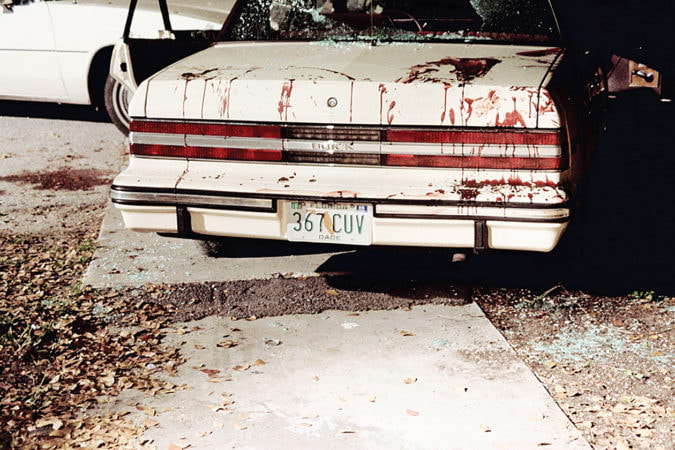
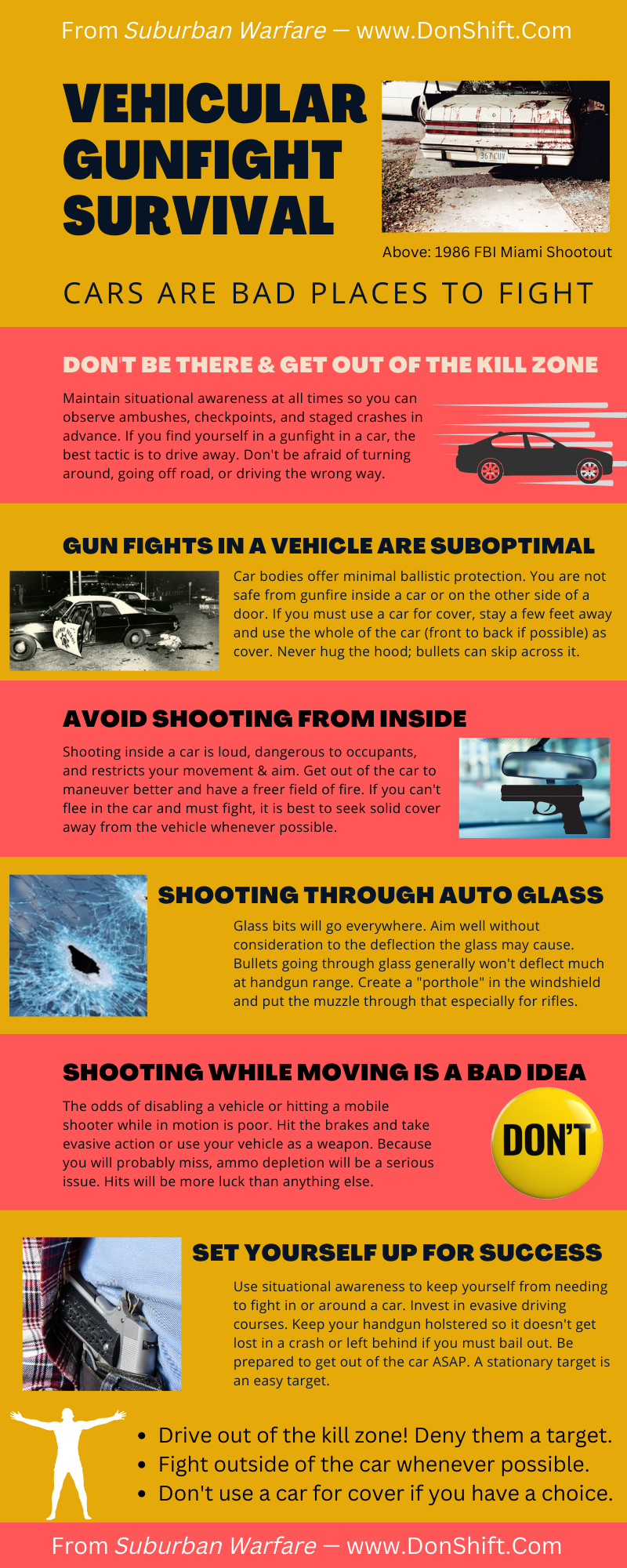
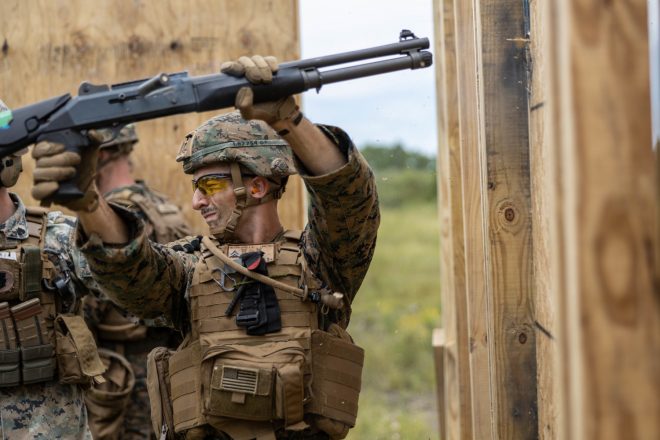
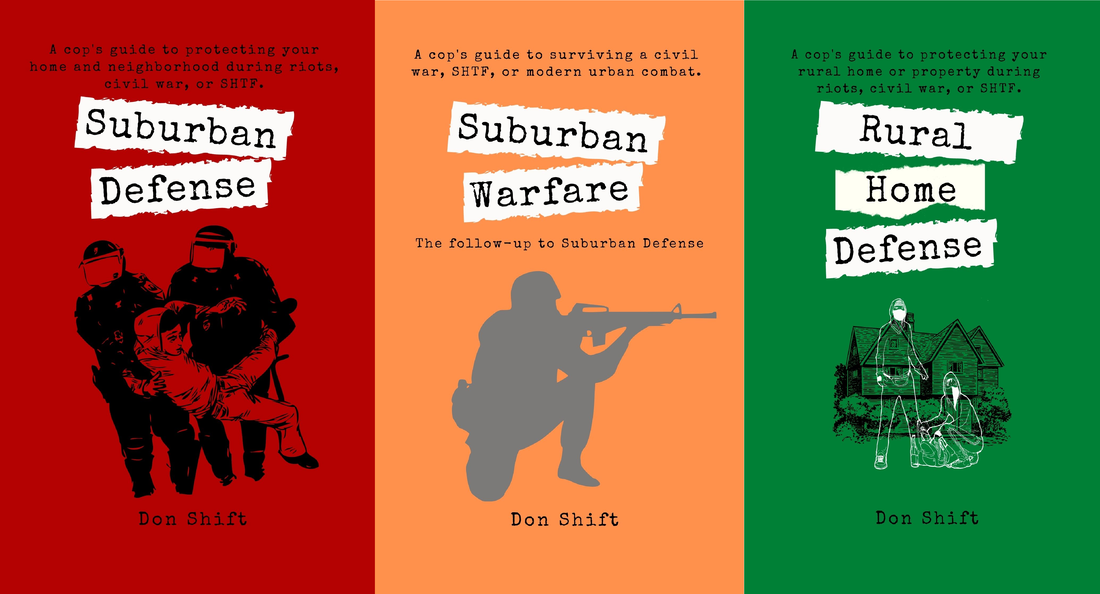
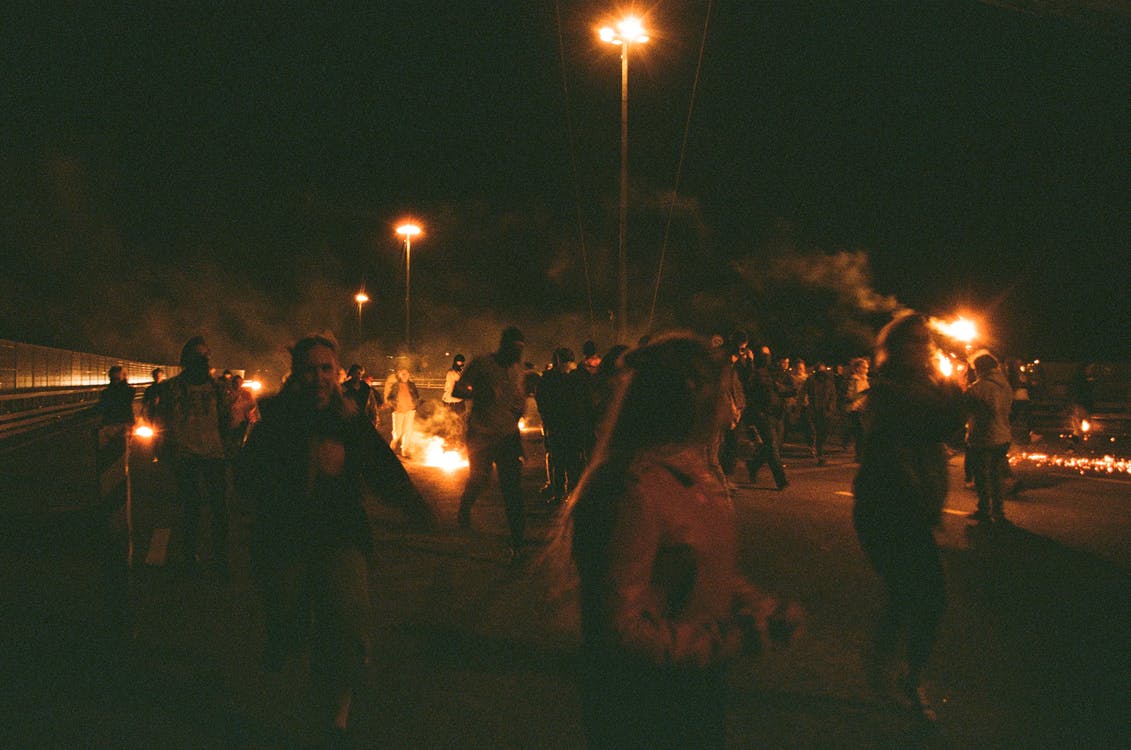
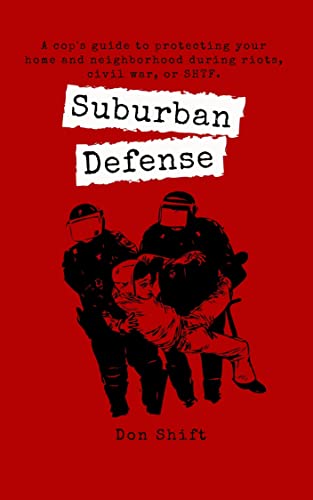
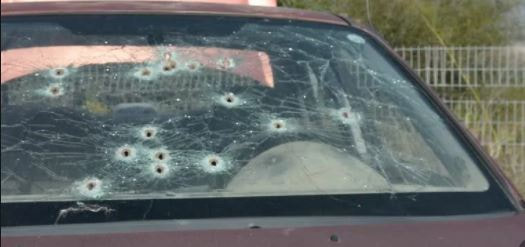
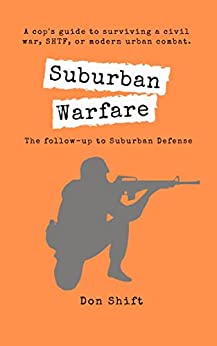
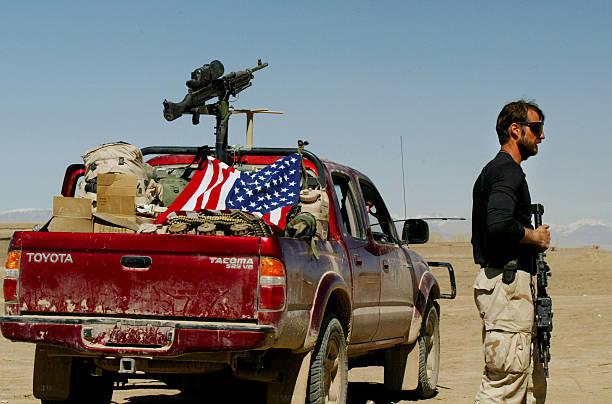
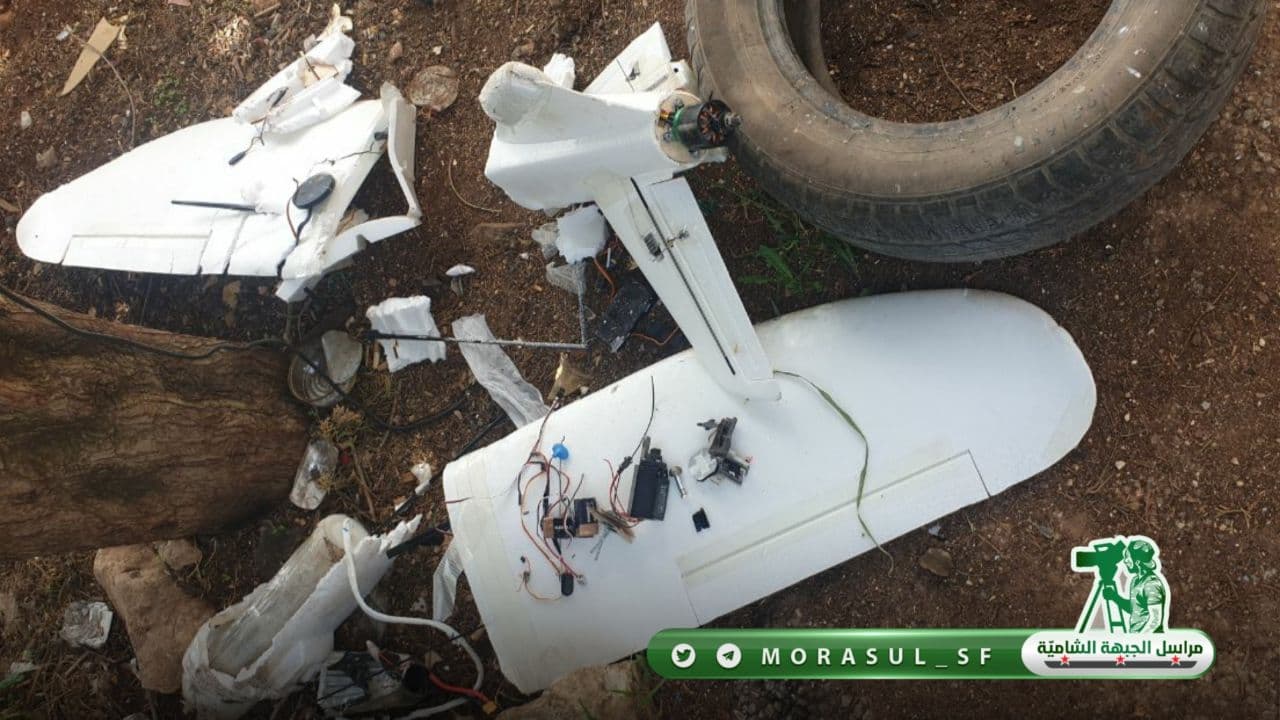
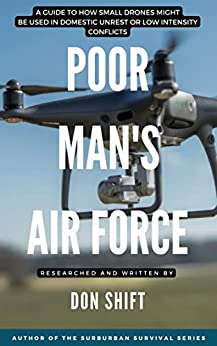
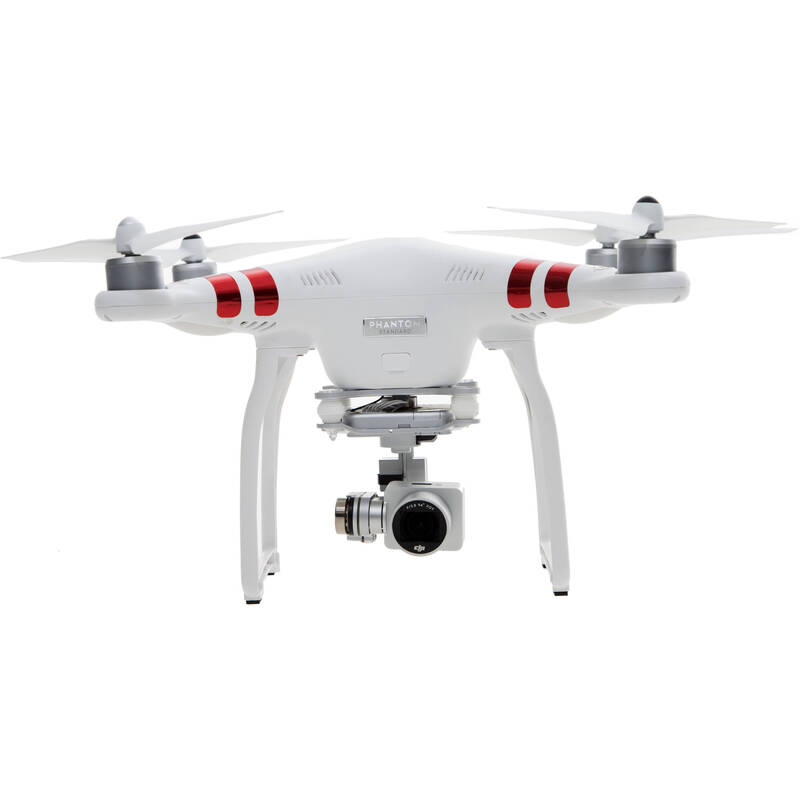
 RSS Feed
RSS Feed
